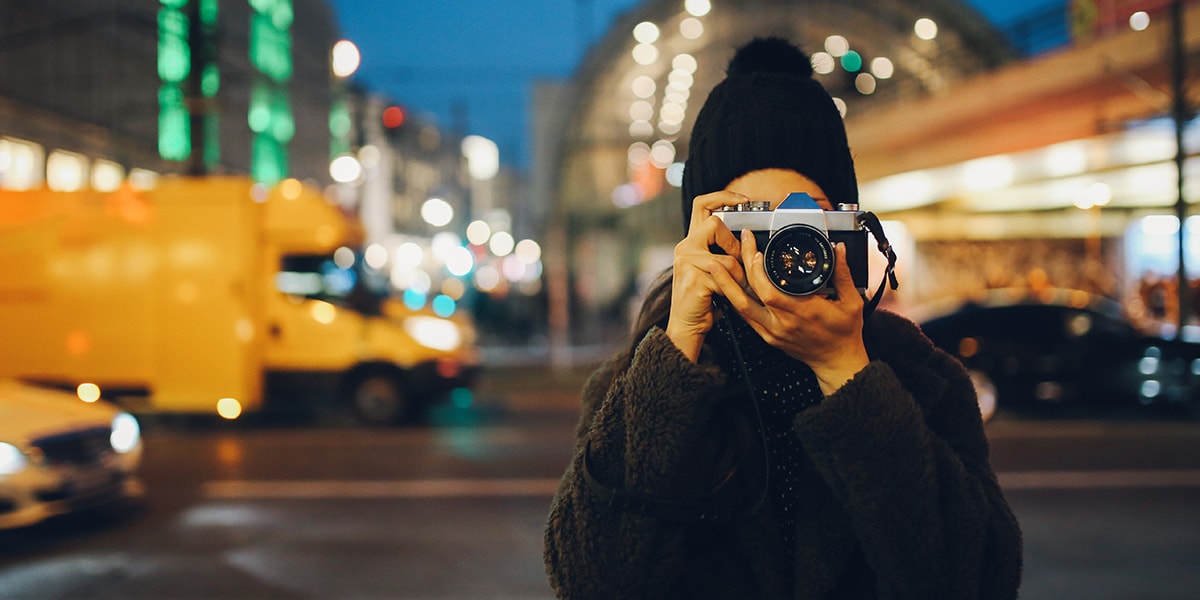The Basic Principles Of Street Photographers
Table of ContentsSee This Report about Street PhotographersThe 9-Minute Rule for Street PhotographersGetting The Street Photographers To WorkStreet Photographers Can Be Fun For EveryoneStreet Photographers Fundamentals Explained
A style of photography that documents everyday life in a public place. The actual publicness of the setup makes it possible for the photographer to take honest photos of unfamiliar people, often without their expertise. Road professional photographers do not always have a social function in mind, but they favor to separate and capture minutes which may or else go unnoticed (Street Photographers).He was influenced by several of those that influenced the street digital photographers of the 1950s and '60s, he was not chiefly interested in catching the spirit of the road., that worked side by side with professional photographers trying to record the essence of metropolitan life.
Due to the relatively primitive innovation readily available to him and the lengthy exposure time needed, he had a hard time to record the hustle and bustle of the Paris streets. He trying out a collection of photo methods, attempting to find one that would enable him to catch motion without a blur, and he located some success with the calotype, patented in 1841 by William Henry Fox Talbot. While the professional photographers' subject was essentially the same, the outcomes were markedly various, showing the effect of the professional photographer's intent on the character of the photos he generated.
Offered the great top quality of his pictures and the breadth of product, designers and artists typically got Atget's prints to utilize as recommendation for their own work, though commercial rate of interests were barely his primary motivation. Instead, he was driven to picture every last residue of the Paris he liked.
The Single Strategy To Use For Street Photographers
They reveal the city via his eyes. His work and fundamental understanding of photography as an art form worked as motivation to generations of photographers that adhered to. The next generation of road professional photographers, though they likely did not refer to themselves thus, was ushered in by the photojournalism of Hungarian-born photographer Andr Kertsz.
Unlike his peers, Brassa utilized a larger-format Voigtlnder camera with a longer direct exposure time, compeling him to be much more computed and thoughtful in his technique than he might have been if using a Leica.
Cartier-Bresson was a champ of the Leica electronic camera and one of the very first professional photographers to optimize its capabilities. The Leica enabled the digital photographer to interact with the surroundings and to catch minutes as they took place. Its relatively little dimension additionally aided the photographer fade into the background, which was Cartier-Bresson's favored technique.
About Street Photographers
It is due to the fact Check Out Your URL that of this basic understanding of the art of image taking that he is usually attributed with finding the tool all over again roughly a century since its invention. He took pictures for even more than a half century and influenced generations of photographers useful site to trust their eye and intuition in the minute.
These are the concerns I shall try to answer: And after that I'll leave you with my own meaning of street photography. Yes, we do. Allow's begin with defining what an interpretation is: According to (Street Photographers) it is: "The act of specifying, or of making something certain, distinct, or clear"
No, definitely not. The term is both restricting and misinforming. Seems like a road photography should be images of a streets right?! And all road professional photographers, besides a tiny number of absolute newbies, will completely value that a street is not the key element to street digital photography, and actually if it's a photo of a street with possibly a few uninteresting people doing absolutely nothing of rate of interest, that's not road photography that's a photo of a street.
Top Guidelines Of Street Photographers
He makes a valid point don't you believe? However, while I agree with him I'm not exactly sure "honest public digital photography" will capture on (although I do kind of like the term "candid photography") due to the fact that "road photography" has actually been around for a very long time, with lots of masters' names affixed to it, so I think the term is here to remain.
You can fire at the coastline, at an event, in an alley, in a park, in a piazza, in a coffee shop, at a gallery or art gallery, in a metro station, at an occasion, on a bridge, under a bridge ...
Yes, I'm afraid we have no choice! Without policies we can not have an interpretation, and without a meaning we don't have a genre, and without a category we do not have anything to specify what we do, and so we are stuck in a "policies interpretation category" loop!
The smart Trick of Street Photographers That Nobody is Discussing
